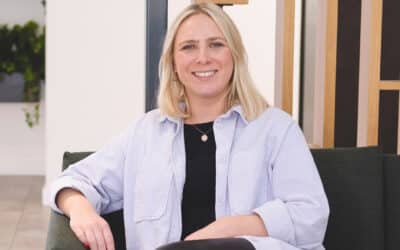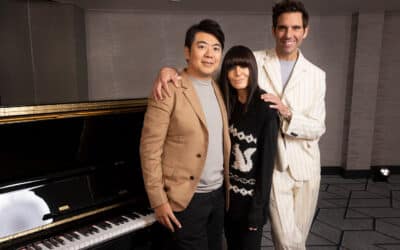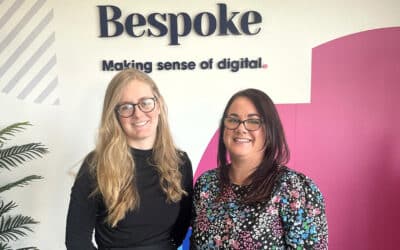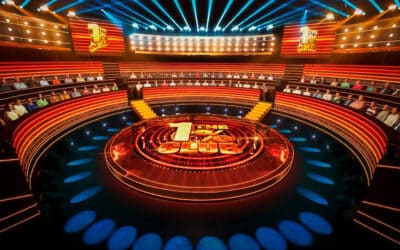Tangerine’s MD, B2B, Sam Gregory, has been on a five-day business fact-finding mission in the United States, learning more about how some of the largest, most successful companies in the world got to be that way. Meeting CEOs, founders and other senior leaders of dot com businesses like Google and LinkedIn as well as more ‘traditional’ enterprises in construction, services and finance, Sam is hoping to return from her trip (with only 10 other North West businesspeople) with inspiration and ideas to share with clients and the Tangerine team.
 Sam Gregory
Sam Gregory
It’s the third and final day of my trip to San Francisco and I’m travelling from the city to San Jose, with a stop in-between, to see some of the most high profile businesses in the world and talk to the people that are shaping them right now. Here’s a summary of what I discovered:
There really is such a thing as a free lunch at Google
In 1996, Stanford University graduates, Larry Page and Sergey Brin built a search engine called ‘Back Rub’. Of course we all know it better by its post-rebrand name – the almighty Google.
The company employs 40,000 ‘Googlers’ in 100 offices across 30 counties. I met with one of them, Carl Damerow, in Google’s San Francisco office to hear about how the business sustains its renowned culture of innovation – and also picked up a few tips on Google-optimising your website along the way.
He explained that the culture at Google starts with its mission statement – ‘to organise the world’s information and make it universally accessible and useable’. This is a mantra that every Googler really takes to heart.
From 20% Projects – where employees devote 20% of their work time to literally inventing – to quarterly goal setting for individuals and teams – which encourage employees to work towards aspirational professional and personal goals.
While investing 20% of time in this way sounds like a huge investment (and it is), the approach has produced some of the company’s most successful products – including Gmail. And of course, employees are handsomely rewarded for their efforts with big financial ‘prizes’ – some reaching a jaw dropping six figures.
Money can’t buy love
But Carl is very clear that money is not what drives the obvious loyalty that Googlers have in spades for the company. It’s rather to do with the business’ flat structure, the trust and sense of responsibility it puts in employees, the sharing of information – locally and globally, and the visibility of the two founders, Larry and Sergey, who religiously deliver a video address to the whole company every single Friday afternoon. Oh – and apparently the free lunches for all employees help too…
So what of optimising your website? Well, Carl explained that it’s all really very simple – fresh content is king. But if you want to learn more, go to ‘Webmaster Central’ and ‘Learn with Google’ (just Google them), where – he says – everything you need to know is explained clear as day. Easy.
So what’s next for Google? Well real progress is being made with Google Glass wearable computers (look them up if you’re not familiar – they’re amazing) [We erm, Googled them and video’s below – ed], as well as self-drive cars (yes, really). Prototypes are already being tested – I spoke to one of the test drivers myself – and legislation has just been passed in California to allow them to be used on the road, so watch this space.
The company has also just last week launched a new B2B search engine, ‘Shopping for Suppliers’, something I’ll certainly be taking a very close look at.
Wowed at Whipsaw
One of the top five most innovative industrial design and product development companies in the world, Whipsaw is the vision of creative tour de force, Dan Harden, founder, principal and Chief Designer.
With several of his creations being a permanent fixture at the Chicago Athenaeum Museum of Architecture and Design (as well as installations in many other museums), over 100 awards and 27 years developing innovations under his belt, Dan and his company have a well-deserved reputation for being at the very top of their game.
Dan has a very clear strategy to keep his business to under 50 designers so he can keep his sleeves rolled up and do what he does best – and loves doing. He is so fiercely passionate about delivering exceptional quality, design excellence and creativity, that the thought of growing to a 200-strong business (which he could easily do), goes against everything he gets up in the morning for.
So as a result, there is literally a queue of businesses clamouring to get on Whipsaw’s client list and the team is in the very fortunate position to be able to focus their efforts on the most potentially creative and ground breaking projects they are presented with.
From amazing zero client computers to clinical tablet solutions, 3D manipulisation systems and even babies’ bottles, Dan and his team are at the very forefront of commercialising and monetising true innovation. They are literally revolutionising product aesthetics and functionality, vastly improving usability for end users and catapulting manufacturers that are lucky enough to work with them to stratospheric success.
Take a look at the Whipsaw website and prepare to be amazed…
LinkedIn’s Mission Control
We all know what LinkedIn is. With 100 million members in over 200 countries, it’s one of social media’s biggest success stories, so meeting one of its co-founders – I’m not ashamed to say – was pretty exciting.
The incredibly likeable and refreshingly honest Allen Blue is one of five co-founders that launched the business in 2003 when they invited around 350 of their most important business contacts to join the network. At the end of the first month in operation, LinkedIn had 4,500 and it just kept on growing.
Just 10 years later it is one of the best known brands in the world. So what does Allen put this success down to? Staying hungry for success. According to Allen, it’s not enough for a business just to have a mission; you’ve got to constantly review it, because the closer you get to your goal, the less hard you work to get there. The key to keeping creativity and innovation alive is to keep moving the goal posts so you’ve always got something to aspirational to strive towards.
As you might imagine, Allen also believes it’s fundamental to have an engaged and loyal workforce that understands the vision and values of the business – particularly during exceptional periods of growth.
For LinkedIn, that means every employee must be working towards the common vision of ‘creating economic opportunity for every professional in the world’, while reinforcing a culture that celebrates personal responsibility, the pursuit of excellence, transformation and honesty.
And to encourage employees to think as creatively as possible, like Google, LinkedIn sets aside time for innovation and creative thinking, supports employees in developing their ideas and rewards them for it.
Allen admitted that the company actually invests far more time in nurturing the brand internally than externally – something that many brands sadly overlook to their detriment in my opinion – so it’s great to see one of the most high profile brands in the world demonstrating the value so very vividly.
That’s all folks
So (in a flurry of excitement) this brings me to the end of my trip. It’s been extremely enlightening and – at the risk of sounding trite – I have met some truly inspirational people.
There is definitely something in the air, or maybe the water, in Silicon Valley, but as Berkeley’s professor Jerry Engel said, there’s no way of really knowing how much longer the whirlwind will last – or where the next ‘Valley’ will be.
One thing is for sure, there are some very exciting things going on there right now and who knows, if I’m lucky, maybe a bit of the magic has rubbed off on me.







